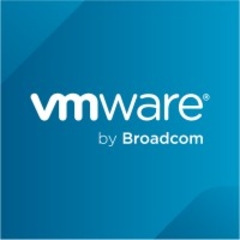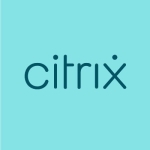
Consultant at a tech consulting company with 51-200 employees
Microsoft Hyper-V vs VMware vSphere
One topic that gets discussed quite often is Microsoft Hyper-V vs VMware vSphere, and a quick Google search for comparisons will return at least several hundred thousand hits. There seems to be a large number of posts and articles trying to make a case that one is better than the other by listing and comparing features of the hypervisors themselves one by one. The purpose of this post is not to claim that one platform is better than the other. Is that the best way to really compare the different virtualization technologies as a whole, or should we take a step back and really look at differences in approach for the virtual infrastructure and/or virtual ecosystems'
Microsoft:
In my opinion, Microsoft is defining and building their virtualization infrastructure as an extension or expansion of their current ecosystem, with System Center at the center of their universe. If you look at the System Center 2012 product page on Microsoft’s website, System Center product details are broken down into two different areas:
- Cloud and Datacenter Management
- Client Management & Security
Is this really a big surprise' Absolutely not, since it clearly makes more sense to build on what you already have in place than to reinvent the wheel. The majority of virtual machines that are running on the Hyper-V platform are running Windows, and System Center already has a solid foundation of features and capabilities for managing Windows environments. These features include:
- Application Delivery
- Mobile Device Management
- Virtual Desktop Management
- Endpoint Protection
- Compliance and Setting Management
- Software Update Management
- Power Management
- Operating System Deployment
- Client Health and Monitoring
- Asset Intelligence
- Inventory
VMware:
In my opinion, VMware is looking to create a completely isolated and separated ecosystem that consists of a collection of appliances with different capabilities working independently and making up the features within the infrastructure, including:
- vSphere
- vCloud Director
- vCloud Connector
- vCloud Network and Security
- vCenter Site Recovery Manager
- vCenter Operations Manager Suite
- vFabric Application Director
- vCloud Automation Center
Conclusions:
One of the main differences that I see in the two approaches is that Microsoft wants virtualization, cloud, and datacenter management to be an extension of the infrastructure, whereas VMware would like the vCloud Suite to be the complete infrastructure. This starts with VMware developing vCloud as an Infrastructure-as-a-Service to fulfill their promise of the software-defined datacenter.
Click here to read my complete review on TheVirtualizationPractice.com
Disclosure: My company The Virtualization Practice is sponsored by some vendors in this market
Disclosure: My company does not have a business relationship with this vendor other than being a customer.
IT Administrator at a tech services company with 51-200 employees
Excellent product as compared to other Hypervisors
Pros:
a reliable hyper-visor with a thin architecture, requires minimal configuration and can be up and running in minutes. Management is simple.
Cons:
None, we have a very good experience in its deployment and usage.
Disclosure: My company does not have a business relationship with this vendor other than being a customer.
Have you used vpshere software to connect ESX host or is there any other software available too?
Buyer's Guide
VMware vSphere
September 2025
Learn what your peers think about VMware vSphere. Get advice and tips from experienced pros sharing their opinions. Updated: September 2025.
868,787 professionals have used our research since 2012.
Director of IT at a manufacturing company with 1,001-5,000 employees
Good entry level product
Valuable Features:
Great product for users stepping into virtualization and consolidation
Room for Improvement:
Management requires vCenter, with additional expense
Other Advice:
This makes sense for smaller companies that are looking to start the consolidation process, or smaller divisions of large companies.
Disclosure: My company does not have a business relationship with this vendor other than being a customer.
Is there any limit of cluster nodes while creating a cluster in ESXi?
Director of IT at a manufacturing company with 1,001-5,000 employees
Very stable and contributes to high uptime. Reduced our data center power and cooling costs.
Valuable Features:
vSphere is an excellent product to virtualize computing workloads. It helps with consolidation of servers and datacenters, and increases utilization of computing resources. The product is very stable, and contributes to high uptime for critical workloads. Additional benefits from a virtualized datacenter include reduced power and cooling costs.
Room for Improvement:
Many features have been added over the years which makes it difficult to deploy without formal training. License costs are fairly high, especially compared with substitutes that are quickly catching up in performance and features.
Disclosure: My company does not have a business relationship with this vendor other than being a customer.
It is worth noting that most good products come with a license to authorize their use.
Virtualization Counsultant at a tech company with 51-200 employees
The only way to use vmware features like HA, FT, and DRS.
It is best way to manage your virtualization in your company and its the only way to use vmware features like HA, FT, DRS and so many other features that vmware provides.
Disclosure: My company does not have a business relationship with this vendor other than being a customer.
Virtualization Counsultant at a tech company with 51-200 employees
Fast, manageable, and secure. But no web interface without vCenter
Valuable Features:
Fast
Manageable
Secure
Low overhead
Room for Improvement:
Little expensive
Needs a lot of dependencies
No web interface without vCenter
Disclosure: My company does not have a business relationship with this vendor other than being a customer.
Which SAN is preferred over ESXi? I am using Dell Compellent so far, it seems to be fine. But I have heard people using EMC, HP. I am planning to buy one more storage. Which one do you recommend for ESXi hosts?
Engineer at a insurance company with 1,001-5,000 employees
vSphere 5.1 – Lesser publicized, neat improvements.
There are a lot of neat improvements in vSphere 5.1, but it’s worth mentioning some of the neat features that may not be getting as much publicity. Below are some of the features in the release documentation that aren’t in the “What’s New in vSphere 5.1” one-pager, and so-far I haven’t seen nearly enough excitement about thus far. These are features that an engineer will enjoy, but the engineer’s boss might not care so much about.
- 32 Nodes Accessing VMDK Simultaneously on VMFS: This is an important improvement for VMware View workloads using Linked Clones as it allows for higher density clusters. Previously, VMFS only supported 8 nodes accessing a VMDK, and to overcome that then the architect had to use NFS. VMFS and NFS now support the same number of nodes to a read-only file with View 5.1 and greater.
-
Virtual Machine Hardware Compatibility: Instead of simply relying on the virtual hardware version number, virtual machines are now given a Virtual Machine Compatibility. For example, VM Hardware Version 4 is now labeled as “Compatible with VMware ESX 3.x and later“. In addition, Administrators can select a “Default Compatibility Level,” which will be a great feature in mixed version clusters.


-
Parallel “Multi-threaded” Storage vMotions: Storage vMotion is now capable of performing four simultaneous disk copies. When migrating a virtual machine with five VMDK files, Storage vMotion copies the first four disks in parallel, then starts the next disk copy as soon as one of the first four finish. This will dramatically increase svMotion processes with many disks.

- All Paths Down (APD) Events No Longer Break Hostd: Prior to vSphere 5.1, an APD event could cause hostd to become unresponsive as it would permanently retry failing I/O, which would cause hosts to disconnect from vCenter, etc. A new timeout is now being implemented via the Misc.APDHandlingEnable and Misc.APDTimeout global settings. In the event of an APD, after the default 140 seconds subsequent I/O is met with a quick “No_Connect” response preventing hostd and other processes from hanging.
-
Better Latency Monitoring within Storage I/O Control: A new metric ‘VmObservedLatency’ is available that replaces the datastore latency metric within SIOC. This metric measures the time between receipt of the I/O by the VMkernel from the virtual machine and receipt of the response from the datastore. Previously, SIOC only measured the latency after the IO had left the ESXi host, but it now measures and controls storage workload latency throughout the whole virtualized storage stack.

-
vCenter Inventory Tagging: Virtual machines can now be tagged with labels for more granular, advanced grouping. For example, Tier-1 applications can be tagged as such while also being tagged as a ‘Sharepoint’ server. This is a relatively simple additions that gives much better sorting capabilities for Virtual Machines.

Disclosure: My company does not have a business relationship with this vendor other than being a customer.
reviewer139530Systems and Security Administrator at a hospitality company with 51-200 employees
Top 20Real User
Has anyone had any angst when moving from the vSphere client in 5.1 to the web client in 5.5?
Technical Architect at a tech company with 1,001-5,000 employees
VMware ESXi rocks
Valuable Features:
Brilliant hyper-visor with proven virtualization stack.
Room for Improvement:
You need to learn the internals of the system to really customize and reap all benefits.
Disclosure: My company does not have a business relationship with this vendor other than being a customer.
That's for sure @Kleegeek.
Buyer's Guide
Download our free VMware vSphere Report and get advice and tips from experienced pros
sharing their opinions.
Updated: September 2025
Product Categories
Server Virtualization SoftwarePopular Comparisons
Proxmox VE
Hyper-V
Red Hat OpenShift
Oracle VM VirtualBox
Nutanix AHV Virtualization
Oracle VM
Citrix XenServer
IBM PowerVM
XCP-ng virtualization platform
OpenVZ
Virtuozzo Hybrid Server
ISPsystem VMmanager
Buyer's Guide
Download our free VMware vSphere Report and get advice and tips from experienced pros
sharing their opinions.
Quick Links
Learn More: Questions:
- VMware ESXi or VMware Workstation?
- What is the biggest difference between KVM and vSphere?
- VMware vs. Hyper-V - Which do you prefer?
- How does VMware ESXi compare to alternative virtualization solutions?
- VMware has been positioned in the Leaders Quadrant of Gartner’s Magic Quadrant for four years. Agree/Disagree? Why?
- Proxmox vs ESXi/vSphere: What is your experience?
- Oracle VM vs. latest VMWare?
- Which is the most suitable blade server for VMware ESXi?
- What do each of the VMware and Citrix products do?
- What is the biggest difference between Nutanix Acropolis and VMware vSphere?
















we just need expirienced users that can verify and give details more than google.yes rich content but unreliable